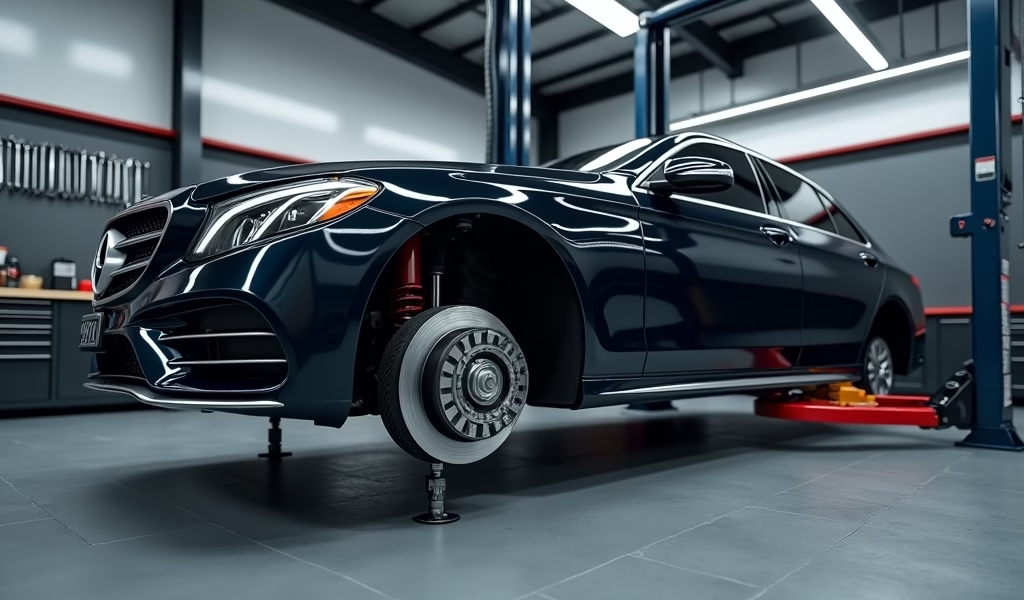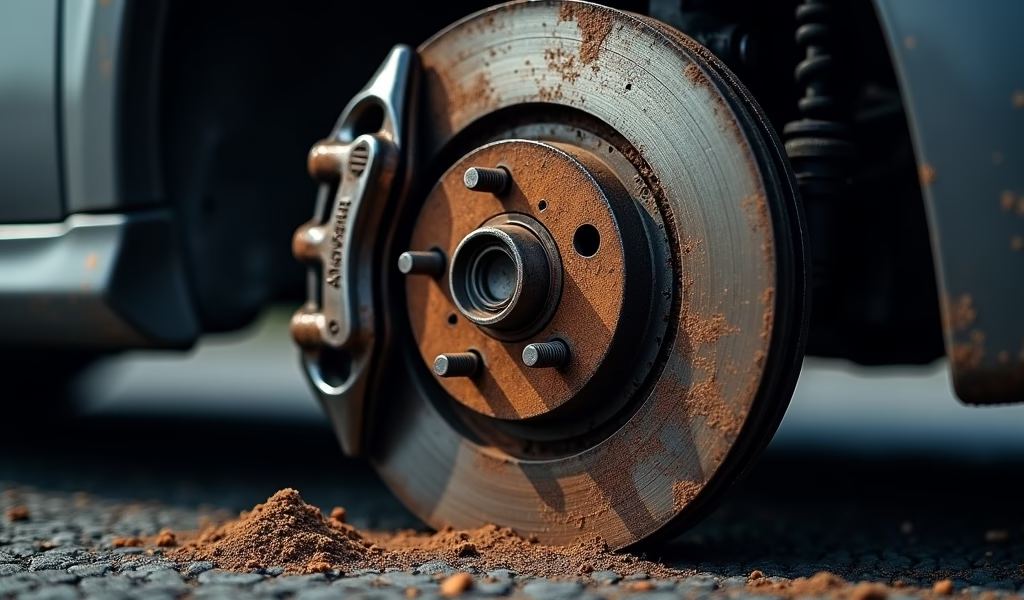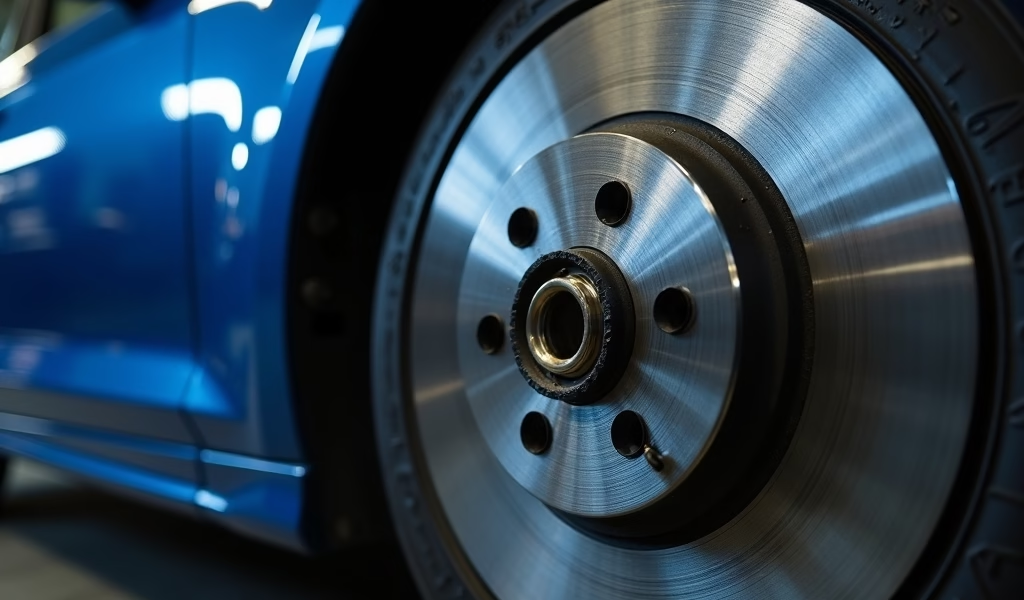Overview
This article provides seven essential tips for maintaining your vehicle’s brake system, including recognizing warning signs, performing regular inspections, maintaining brake fluid, replacing brake pads timely, caring for rotors, servicing calipers, and adopting brake-friendly driving habits. The author emphasizes that proactive brake maintenance is not just about saving money but is crucial for road safety and preventing minor issues from becoming dangerous, expensive problems.
Table of Contents
- Understanding Your Brake System
- Recognizing Brake Warning Signs
- Regular Brake Inspections
- Brake Fluid Maintenance
- Timely Brake Pad Replacement
- Rotor Care and Maintenance
- Don’t Forget the Calipers
- Driving Habits That Preserve Brakes
- Conclusion
- Frequently Asked Questions
Understanding Your Brake System
Your vehicle’s braking system isn’t just another car component—it’s your lifeline on the road. As a mechanic with over 15 years in the shop, I’ve seen firsthand how proper brake maintenance can be the difference between a close call and a catastrophe.
Think of your brake system as an orchestra, with each component playing a crucial role. When you press that brake pedal, a complex chain reaction begins: hydraulic pressure increases in your brake lines, calipers squeeze the pads against the rotors, and your two-ton vehicle gradually comes to a stop. It’s mechanical poetry in motion.
But like any well-oiled machine, your brakes need regular care. This comprehensive brake inspection guide will walk you through seven professional tips that ensure your brakes remain responsive, reliable, and ready when you need them most.
Recognizing Brake Warning Signs
Your car has ways of telling you when brake problems are developing, and knowing these signals can save you from costly repairs or dangerous situations. The trick is learning to listen and respond promptly.
Audible Warning Signs
- High-pitched squealing: This isn’t just annoying—it’s your brake pads’ built-in wear indicators telling you they’re getting thin
- Grinding noises: If you hear metal-on-metal grinding, you’ve waited too long; your pads are completely worn, and your rotors are now being damaged
- Clicking or rattling: This typically indicates loose components that need immediate attention
Physical Warning Signs
- Soft or spongy pedal feel: This suggests air in the brake lines or fluid leaks
- Vibration or pulsating: Your rotors may be warped, which affects stopping power and creates uneven wear
- Vehicle pulling to one side: Often indicates a stuck caliper or uneven brake pad wear
- Burning smell: This could mean overheated brakes or a stuck caliper that needs immediate attention
When I worked at my father’s shop as a teenager, a customer ignored her brake warning light for weeks. By the time she came in, both front calipers were seized and the rotors resembled warped vinyl records. What would have been a simple $200 pad replacement turned into a $1,200 overhaul.
According to NHTSA brake safety data, approximately 22% of vehicle crashes involve brake-related issues that proper maintenance could have prevented. Don’t become a statistic—heed those warning signs!

Regular Brake Inspections
Prevention beats cure every time, especially with brakes. Setting up a regular inspection schedule doesn’t just save money—it saves lives.
DIY Inspection Basics
Even if you’re not mechanically inclined, you can perform basic visual checks between professional inspections:
- Check your wheels for brake dust buildup—significantly more dust on one wheel than others could indicate a problem
- Peek through your wheel spokes to glimpse the brake pad thickness (if visible with your wheel design)
- Look for any fluid leaks around wheels or under the vehicle when parked
- Test your parking brake engagement to ensure it holds firmly
Professional Inspection Timeline
I recommend this schedule for most drivers:
- Every oil change (or 3,000-5,000 miles): Ask for a quick brake check
- Every 6 months: Have a technician inspect brake pad thickness, rotor condition, and fluid levels
- Annually: Schedule a complete brake system inspection including lines, hoses, and master cylinder
For those with high-performance vehicles or who drive in mountainous areas, I suggest more frequent checks. Your driving habits dramatically affect brake wear—city drivers with frequent stops need more regular inspections than highway commuters.
Remember, brake inspections aren’t just about finding problems; they’re about preventing them. One of my loyal customers has driven the same Toyota for 287,000 miles without a single brake emergency, all thanks to religious adherence to maintenance schedules. That’s not luck—it’s smart ownership.
Brake Fluid Maintenance
Brake fluid is the unsung hero of your braking system, and maintaining it properly is absolutely critical. This hygroscopic fluid (meaning it absorbs moisture from the air) transfers force from your foot to the braking components—but it degrades over time.
Why Brake Fluid Matters
Fresh brake fluid maintains a consistent boiling point, ensuring reliable brake performance even under extreme conditions. As it absorbs moisture, that boiling point lowers, potentially leading to brake fade during hard stops. Moisture also corrodes internal brake components, leading to expensive repairs down the road.
Checking Fluid Condition
- Color: New fluid ranges from clear to amber; dark brown or black fluid indicates contamination
- Level: Keep an eye on the reservoir level; a dropping level could indicate leaks or worn brake pads
- Consistency: Fluid should be free from particles or debris
Fluid Replacement Schedule
I recommend replacing brake fluid every 2-3 years regardless of mileage. This might seem frequent to some, but I’ve witnessed too many preventable failures from old, contaminated fluid to suggest otherwise. Even if it looks okay visually, microscopic moisture and contaminants compromise its performance.
Using the correct fluid type is crucial. Your vehicle requires a specific DOT classification (DOT 3, 4, 5.1), and mixing types can cause seal damage and system failure. The American Petroleum Institute offers excellent guidance on fluid standards.
The brake fluid flush is one service I never let slide on my personal vehicles. At around $100-150, it’s one of the most cost-effective insurance policies you can buy for your braking system.
Timely Brake Pad Replacement
Replacing brake pads before they’re completely worn isn’t just good practice—it’s essential for protecting other components and maintaining optimal braking performance. I’ve seen too many drivers push their pads to the absolute limit, causing exponentially more expensive damage.
Understanding Pad Wear Patterns
Brake pads typically start with 10-12mm of friction material and should be replaced when they reach 3-4mm. Waiting until they’re metal-on-metal not only creates a safety hazard but also damages your rotors, turning a simple pad replacement into a much costlier repair.
Signs It’s Time for New Pads
- Your brake warning light illuminates (if equipped with electronic wear sensors)
- You hear persistent squealing or grinding during braking
- Your braking distance has noticeably increased
- It’s been more than 50,000 miles since your last pad replacement (though this varies widely)
When selecting replacement pads, consider your driving style and local conditions. In my shop, I offer three grades: economy (ideal for light driving), premium ceramic (perfect for most drivers), and performance (for spirited drivers or those in mountainous regions). The few extra dollars for quality pads pay dividends in longevity and performance.
Remember that proper brake service includes more than just slapping on new pads. The hardware (clips, shims, and anti-rattle devices) should be replaced, slides lubricated, and rotors either resurfaced or replaced. These details make the difference between brakes that perform flawlessly for 50,000 miles and ones that start causing problems after 20,000.

Rotor Care and Maintenance
Your brake rotors (also called discs) are the unsung heroes of your braking system. These spinning metal discs work with your brake pads to create the friction needed to stop your vehicle. Their condition directly impacts stopping power, brake pedal feel, and overall safety.
Signs of Rotor Issues
- Pulsating brake pedal: The most common symptom of warped rotors
- Visible scoring or grooves: Indicates uneven wear or damage from worn pads
- Blue discoloration: Suggests overheating, which can lead to reduced braking efficiency
- Excessive rust beyond the surface: Can affect braking performance and accelerate wear
Resurfacing vs. Replacement
Twenty years ago, resurfacing (machining) rotors was standard practice. Today, with thinner, more economical rotors, complete replacement is often more cost-effective. In my shop, I typically recommend replacement when:
- Rotors are below minimum thickness specification (check your service manual)
- Deep grooves or heat spots are present
- You’re experiencing significant vibration during braking
- The rotors have been resurfaced previously
For perspective, replacing rotors with pads might cost an additional $150-300, but it provides better braking performance, eliminates the chance of rotor-related comebacks, and often lasts longer than machined surfaces.
One trick I share with my customers: after driving through puddles or during rainy weather, apply light brake pressure occasionally while driving to keep rotors dry. This prevents rust formation and maintains optimal braking performance in wet conditions.
Don’t Forget the Calipers
While most drivers focus on pads and rotors, your brake calipers deserve attention too. These components house the pistons that press your brake pads against the rotors, and their proper function is critical for even, responsive braking.
How Calipers Work
Think of calipers as large clamps that squeeze your brake pads against the rotors. When you press the brake pedal, hydraulic pressure forces the caliper pistons outward, applying pressure to the inner brake pad. The entire caliper then slides slightly to bring the outer pad in contact with the rotor as well.
Signs of Caliper Problems
- Vehicle pulling to one side during braking: Often indicates a stuck caliper
- Uneven brake pad wear: One pad significantly more worn than the other
- Leaking brake fluid around wheels: Suggests seal failure in the caliper
- Excessive heat at one wheel: A dragging caliper generates significant heat
Professional brake repair should include cleaning and lubricating caliper slides and pins, which is essential for proper caliper movement. I’ve rescued many vehicles from the scrapyard by simply rebuilding seized calipers that other shops wanted to replace entirely.
For vehicles in rust-prone regions or those over 10 years old, I often recommend caliper replacement or rebuilding during major brake service. The cost difference is relatively small compared to the peace of mind and performance benefits. According to Car and Driver’s research, proper caliper maintenance significantly extends overall brake system life.
Driving Habits That Preserve Brakes
How you drive has as much impact on brake longevity as maintenance does. I’ve seen identical vehicles with wildly different brake wear simply because of driver habits. A few simple adjustments to your driving style can double your brake life.
Habits That Kill Brakes
- “Riding” the brake pedal (keeping your foot lightly pressed while driving)
- Aggressive, last-minute stopping instead of gradual deceleration
- Tailgating, which forces frequent hard braking
- Carrying unnecessary weight in your vehicle
Brake-Friendly Driving Techniques
- Look far ahead and anticipate stops, beginning to brake earlier and more gently
- Use engine braking by downshifting (especially effective on downhill stretches)
- Maintain proper following distance to avoid panic stops
- Remove excess cargo that makes your vehicle heavier than necessary
One technique I teach my customers is the “coasting approach.” When you see a red light ahead, take your foot off the accelerator early and let the car naturally slow down before applying brakes. This simple habit can extend brake life by 20% or more while also improving fuel economy.
City drivers face unique challenges with constant stop-and-go traffic. If this describes your commute, consider scheduling more frequent brake inspections and investing in higher-quality components that can better withstand the additional stress.
Conclusion
Your vehicle’s braking system isn’t just another maintenance item—it’s your most important safety feature. After 15+ years working under countless hoods, I can confidently say that brake issues are among the most preventable vehicle problems, yet they’re often the most neglected until something goes wrong.
By incorporating these seven professional tips into your vehicle care routine, you’re not just extending component life or saving money on repairs (though you’ll certainly do both). You’re investing in your safety and the safety of everyone who shares the road with you.
Remember that brake maintenance follows a simple rule: the earlier you address small issues, the less likely they’ll become dangerous, expensive problems. That squeal might just be an annoyance today, but it could be a costly repair tomorrow—and potentially a safety risk in between.
Whether you’re a DIY enthusiast who enjoys weekend maintenance or someone who prefers to leave it to the professionals, staying proactive about brake care is one of the smartest decisions you can make as a vehicle owner. Your future self (and your wallet) will thank you.
Frequently Asked Questions
How often should I have my brakes inspected?
Most vehicles benefit from a basic brake inspection every 6 months or 6,000 miles, whichever comes first. Drivers in hilly areas or those who frequently drive in stop-and-go traffic should consider more frequent checks.
What’s the average lifespan of brake pads?
Brake pads typically last 30,000-70,000 miles depending on driving habits, vehicle type, and pad quality. City drivers might need replacement closer to 30,000 miles, while highway commuters might get 70,000 miles or more.
Is it normal for brakes to squeak occasionally?
Occasional squeaking, especially after sitting overnight or in humid conditions, can be normal due to surface rust formation. Persistent squealing, however, typically indicates worn pads or glazed rotors requiring attention.
Can I replace brake pads without replacing rotors?
Yes, but it depends on rotor condition. If rotors are within specifications and have no significant grooves or heat spots, you can often replace just the pads, though replacing both together generally provides better performance.
How do I know if I need to replace my brake fluid?
Brake fluid should be replaced every 2-3 years regardless of color, but dark brown or black fluid is a clear indication it needs changing immediately. Most vehicles benefit from a brake fluid flush every 24-36 months to remove moisture and contaminants.

